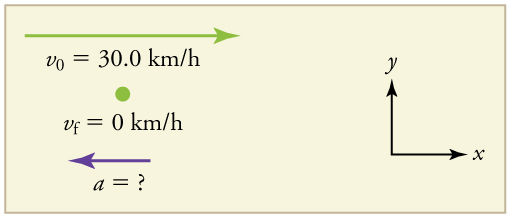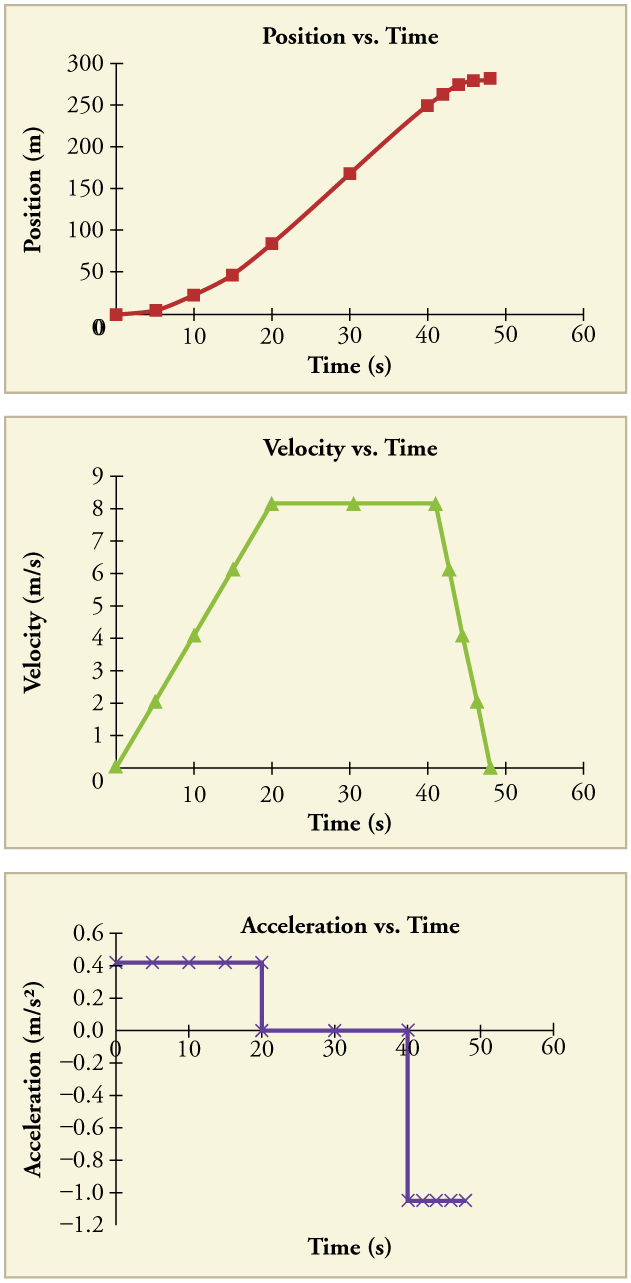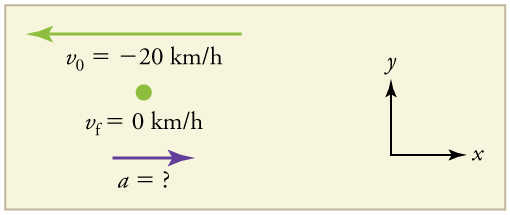| << Chapter < Page | Chapter >> Page > |
Now suppose that at the end of its trip, the train in [link] (a) slows to a stop from a speed of 30.0 km/h in 8.00 s. What is its average acceleration while stopping?
Strategy

In this case, the train is decelerating and its acceleration is negative because it is toward the left. As in the previous example, we must find the change in velocity and the change in time and then solve for acceleration.
Solution
1. Identify the knowns. , (the train is stopped, so its velocity is 0), and .
2. Solve for the change in velocity, .
3. Plug in the knowns, and , and solve for .
4. Convert the units to meters and seconds.
Discussion
The minus sign indicates that acceleration is to the left. This sign is reasonable because the train initially has a positive velocity in this problem, and a negative acceleration would oppose the motion. Again, acceleration is in the same direction as the change in velocity, which is negative here. This acceleration can be called a deceleration because it has a direction opposite to the velocity.
The graphs of position, velocity, and acceleration vs. time for the trains in [link] and [link] are displayed in [link] . (We have taken the velocity to remain constant from 20 to 40 s, after which the train decelerates.)

What is the average velocity of the train in part b of [link] , and shown again below, if it takes 5.00 min to make its trip?

Strategy
Average velocity is displacement divided by time. It will be negative here, since the train moves to the left and has a negative displacement.
Solution
1. Identify the knowns. , , .
2. Determine displacement, . We found to be in [link] .
3. Solve for average velocity.
4. Convert units.
Discussion
The negative velocity indicates motion to the left.
Finally, suppose the train in [link] slows to a stop from a velocity of 20.0 km/h in 10.0 s. What is its average acceleration?
Strategy
Once again, let's draw a sketch:

As before, we must find the change in velocity and the change in time to calculate average acceleration.
Solution
1. Identify the knowns. , , .
2. Calculate . The change in velocity here is actually positive, since
3. Solve for .
4. Convert units.
Discussion
The plus sign means that acceleration is to the right. This is reasonable because the train initially has a negative velocity (to the left) in this problem and a positive acceleration opposes the motion (and so it is to the right). Again, acceleration is in the same direction as the change in velocity, which is positive here. As in [link] , this acceleration can be called a deceleration since it is in the direction opposite to the velocity.

Notification Switch
Would you like to follow the 'Sample chapters: openstax college physics for ap® courses' conversation and receive update notifications?